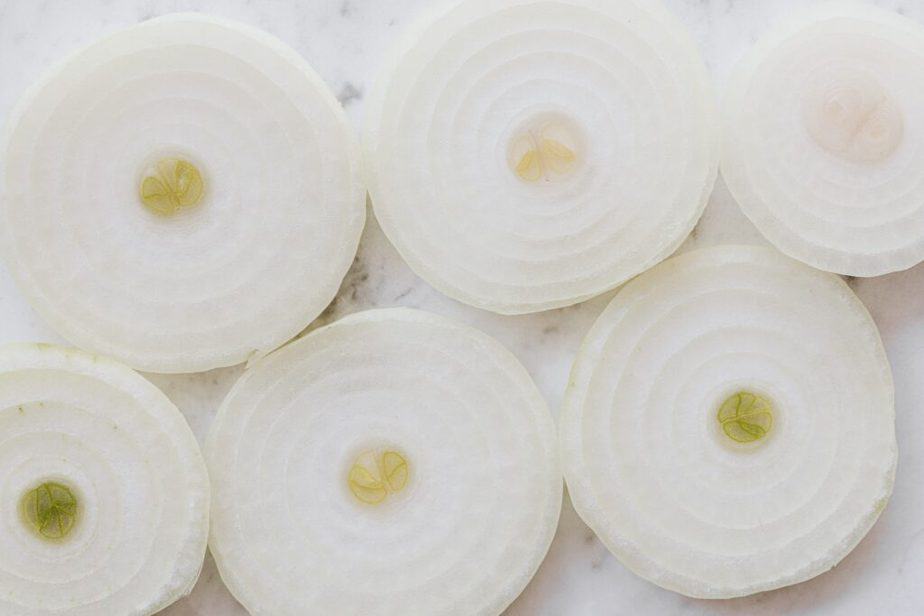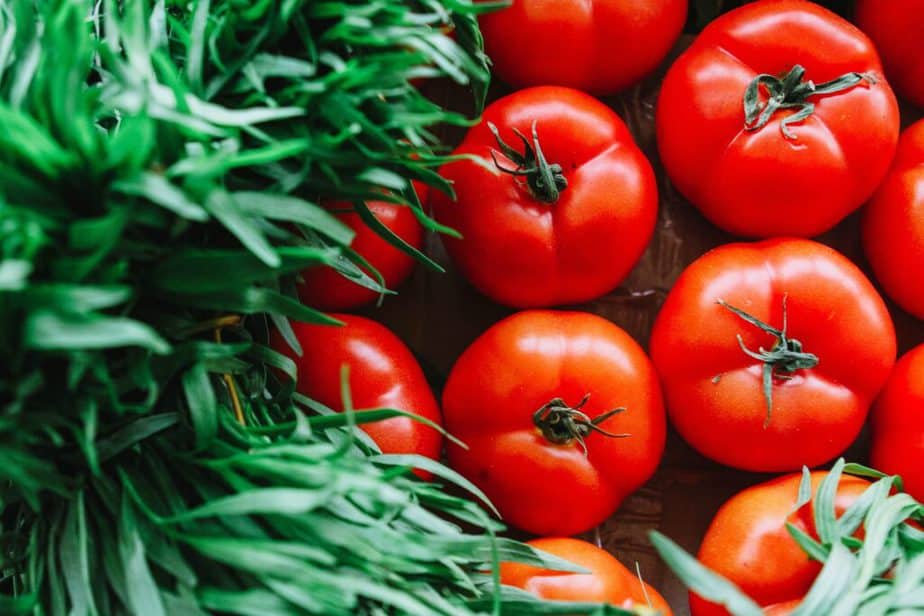This brief guide highlights the top 10 indispensable ingredients that promise not only to simplify meal preparation but to enrich each dish with flavor and nutritional value.This guide zeroes in on the top 10 ingredients to have in your kitchen, offering a foundation upon which countless dishes can be built.
Understanding the significance of these ingredients extends beyond their immediate use in recipes. From the heart-healthy monounsaturated fats found in extra virgin olive oil to the pungent, flavor-enhancing properties of garlic, this list is carefully curated to ensure that every meal is an opportunity to explore new tastes and textures while maintaining a balanced diet.
By integrating these key ingredients into your pantry, you’re not just stocking up on food; you’re investing in a culinary toolkit. This article is designed to be an informative resource that not only answers the question of what to keep in your kitchen but also provides the insights and inspiration to use these ingredients to their fullest potential.

Top 10 Ingredients to have in your kitchen
Below is a comprehensive list of the top 10 ingredients to have in your kitchen:
- Extra Virgin Olive Oil
- Garlic
- Sea Salt
- Fresh Black Pepper
- Lemons
- Whole Grains
- Canned Tomatoes
- Fresh Herbs
- Quality Proteins
- Onions
Onions / Chopped Onions:

Onions are a cornerstone of flavor in cuisines worldwide, acting as a foundational element in cooking. Their versatility and depth of flavor make them indispensable in both simple home cooking and complex gourmet dishes. This section will shed light on the nutritional benefits of onions and explore their wide-ranging culinary applications, illustrating why this humble vegetable is a must-have in every kitchen.
Onions are not only a key ingredient for their flavor but also offer significant health benefits. Rich in vitamin C, onions aid in immune system function and provide antioxidants that combat inflammation and reduce the risk of chronic diseases. Additionally, onions contain flavonoids, particularly quercetin, which has been shown to support cardiovascular health by lowering blood pressure.
Furthermore, the fiber content in onions promotes digestive health, while their low calorie count makes them an excellent choice for anyone looking to maintain or lose weight. Incorporating onions into meals can therefore contribute to a balanced and healthful diet, enhancing both the nutritional value and taste of your dishes.
Onions form the base of countless recipes, contributing a depth of flavor that is unparalleled. They can be sautéed to a golden brown to create a rich flavor base for soups, stews, and sauces. Raw onions add a crisp, sharp element to salads and salsas, while caramelized onions bring a sweet, complex flavor to dishes.
Understanding the different types of onions is essential for cooking. Yellow onions are all-purpose and ideal for cooking, red onions are best used raw for their color and mild flavor, and white onions have a crisp texture and sharpness, making them perfect for Mexican cuisine.
Nutritional Benefits of Onions
| Nutrient | Benefit |
|---|---|
| Vitamin C | Supports immune function, antioxidant |
| Quercetin | May reduce blood pressure, anti-inflammatory |
| Fiber | Aids in digestion, supports gut health |
Top 5 Uses of Onions in Cooking
- Sautéing: Forms the flavor base for soups and sauces.
- Raw in Salads: Adds crunch and a sharp taste.
- Caramelizing: Brings sweetness to pizzas and sandwiches.
- Roasting: Enhances the natural sweetness in side dishes.
- Pickling: Offers a tangy flavor to sandwiches and salads.
Onions are a fundamental ingredient in the culinary world, essential for building flavor profiles in a wide array of dishes. Their health benefits and versatility in cooking make them an invaluable component of a nutritious diet, highlighting their role as more than just a background ingredient.
Tomatoes / Sliced Tomatoes:

Canned tomatoes are a staple in pantries around the world. They serve as the backbone for a variety of dishes, from hearty stews and soups to vibrant sauces and casseroles. This section is all about benefits of keeping canned tomatoes on hand, exploring their health benefits and the various ways they can be utilized in the kitchen to create flavorful, nutritious meals.
Canned tomatoes are packed with vitamins, minerals, and antioxidants, most notably lycopene, a powerful antioxidant known for its potential to reduce the risk of chronic diseases, including heart disease and certain types of cancer. Unlike fresh tomatoes, the canning process enhances the bioavailability of lycopene, making it easier for the body to absorb this beneficial compound.
Moreover, canned tomatoes are a good source of vitamins C and K, potassium, and fiber, contributing to overall health by supporting heart health, aiding in digestion, and providing essential nutrients for bone health. Incorporating canned tomatoes into meals can help meet daily vegetable intake recommendations while adding depth and flavor to your dishes.
Tomatoes can be used as a base for pasta sauces, chili, and curries, or added to stews and casseroles for a boost of flavor and nutrition. Their convenience and year-round availability ensure that robust tomato flavors can be enjoyed regardless of the season.
Canned tomatoes come in various forms, including whole, diced, crushed, and pureed, offering flexibility based on the recipe requirements. Whole canned tomatoes are perfect for making sauces and stews, where they can be broken down into the desired consistency. Diced or crushed tomatoes are ideal for quicker meals, easily integrating into a variety of dishes.
Nutritional Profile of Canned Tomatoes
| Nutrient | Benefit |
|---|---|
| Lycopene | Antioxidant properties, supports heart health |
| Vitamin C | Immune system support, skin health |
| Potassium | Blood pressure regulation, cardiovascular health |
Top 5 Uses of Canned Tomatoes in Cooking
- Homemade Pasta Sauce: Basis for marinara and other Italian sauces.
- Chili: Adds depth and body to this hearty dish.
- Soups and Stews: Provides a rich, tomato base.
- Curries: Contributes to the sauce’s complexity and tang.
- Casseroles: Offers moisture and flavor to baked dishes.
Canned tomatoes are a kitchen powerhouse, providing culinary versatility, convenience, and a host of health benefits.
Also, canned tomatoes is a primary ingredient in pizza sauce used by dominos.
Black Pepper / Crushed Pepper:

Fresh black pepper, often dubbed the ‘King of Spices’, holds a prestigious spot in the culinary world. This spice comes from the dried berries of the Piper nigrum vine and has been valued for its medicinal properties and flavor-enhancing capabilities for millennia. This section will explore the multifaceted uses of black pepper in cooking and its surprising health benefits.
Black pepper is rich in antioxidants, it helps combat oxidative stress and can reduce inflammation. Piperine, the active compound in black pepper, not only gives it its pungency but also supports nutrient absorption, especially that of selenium, vitamin B12, beta-carotene, and curcumin, making it a valuable addition to any meal for its bioenhancement properties.
Regular inclusion of fresh black pepper in diets has been associated with improved digestive health and a stimulated appetite. Additionally, its antimicrobial properties can contribute to food preservation, making it a staple in both kitchen pantries and medicine cabinets.
The application of fresh black pepper in cooking is vast and varied. Its ability to add a layer of flavor complexity makes it indispensable in the creation of marinades, dressings, sauces, and as a finishing touch on steaks, pasta, and even some desserts.
To fully harness the aromatic qualities of black pepper, it should be freshly ground. This practice releases volatile oils and compounds responsible for its characteristic warm and spicy notes. The size of the grind can be adjusted according to the dish, with a coarser grind for bold flavors and a fine grind for a more subtle presence.
Nutritional Profile of Black Pepper
| Compound | Benefit |
|---|---|
| Piperine | Enhances nutrient absorption, anti-inflammatory |
| Antioxidants | Combat oxidative stress, support immune health |
Top 5 Uses of Fresh Black Pepper in Cooking
- Steaks and Meats: Enhances flavor and adds a spicy kick.
- Salads: A fine grind adds depth to dressings.
- Soups and Stews: Provides a warm flavor base.
- Pasta Dishes: Finishes with a burst of spice and aroma.
- Desserts: Complements sweet flavors, especially in fruit-based dishes.
Extra Virgin Olive Oil
Extra Virgin Olive Oil (EVOO) stands as a pillar of culinary excellence, transcending mere cooking oil to become a symbol of health and flavor in kitchens around the globe. EVOO serves as a foundational ingredient that enriches dishes with its nuanced flavor profile and health benefits.
Extra Virgin Olive Oil is renowned for its health-promoting properties, primarily attributed to its high content of monounsaturated fats and antioxidants. These components are pivotal in reducing the risk of heart diseases, lowering blood pressure, and combating inflammation. Furthermore, the presence of polyphenols in EVOO contributes to its antioxidant capabilities, offering protection against chronic diseases and aging.
The nutritional profile of Extra Virgin Olive Oil makes it a superior choice for cooking and dressing, positioning it as a heart-healthy fat that can enhance the dietary quality of meals. Incorporating EVOO into your diet supports a balanced and nutritious lifestyle, aligning with dietary recommendations for reducing saturated fat intake and focusing on healthy fats.
One of the unique attributes of EVOO is its ability to complement both cold and warm dishes, making it an indispensable ingredient in the kitchen. Its flavor profile can range from fruity and mild to robust and peppery, allowing it to adapt to various cuisines and recipes. When selecting EVOO for cooking, consider the dish’s flavor palette and choose an oil that will enhance, not overpower, the overall taste.
Extra Virgin Olive Oil is a culinary chameleon, adept at enhancing both the flavor and texture of a wide array of dishes. Its application spans from dressing salads to sautéing vegetables, grilling meats, and even baking, offering a healthier alternative to butter and other saturated fats.
Nutritional Benefits of Extra Virgin Olive Oil
| Nutrient | Benefit |
|---|---|
| Monounsaturated Fats | Supports heart health, lowers cholesterol |
| Polyphenols | Antioxidant properties, protects against chronic diseases |
| Vitamin E | Contributes to skin health, antioxidant |
Top 5 Uses of Extra Virgin Olive Oil in Cooking
- Salad Dressings: Enhances the taste of greens and vegetables with a rich, nuanced flavor.
- Cooking Base: Ideal for sautéing and roasting, adding depth to dishes.
- Dipping Sauce: Served with bread, spices, and herbs for a simple yet flavorful appetizer.
- Baking: A healthier fat option for cakes, bread, and pastries.
- Finishing Oil: Drizzled over completed dishes for an extra layer of flavor.
Garlic
Garlic, a humble yet powerful ingredient, is celebrated across cuisines worldwide for its ability to transform the simplest dishes into aromatic delights. Its pungent flavor and health-promoting properties make it a staple in culinary traditions, from the heartiest stews to the most delicate sauces
Garlic is not only a flavor powerhouse but also a treasure trove of nutritional benefits. It is rich in vitamins C and B6, manganese, selenium, and other antioxidants, including allicin, which is responsible for its characteristic aroma and therapeutic properties. Research has highlighted garlic’s role in enhancing cardiovascular health, its antibacterial and antiviral effects, and its potential to boost immune function.
Regular incorporation of garlic into meals can contribute to a balanced diet, supporting overall health and well-being. Its antioxidants help combat oxidative stress, reducing the risk of chronic diseases and promoting longevity. The health benefits of garlic extend beyond its culinary use, making it a valuable ingredient for both its flavor and nutritional profile.
Garlic’s versatility in the kitchen is unparalleled. It can be used in its many forms: raw, sautéed, roasted, or as garlic powder, to impart depth and complexity to dishes. From marinades, dressings, and sauces to soups, stir-fries, and roasted vegetables, garlic adds a layer of flavor that is both bold and nuanced.
For a milder flavor, whole garlic cloves can be added to roasts or stews. Minced or crushed garlic releases more of its aromatic oils, ideal for dishes where garlic is a star ingredient. Roasting garlic transforms it into a sweet, spreadable delight, perfect for adding a rich, caramelized flavor to recipes.
Nutritional Profile of Garlic
| Nutrient | Benefit |
|---|---|
| Vitamin C | Supports immune system, antioxidant |
| Vitamin B6 | Crucial for metabolism, brain health |
| Manganese | Supports bone health and metabolism |
| Selenium | Antioxidant, supports immune function |
| Allicin | Antimicrobial, supports cardiovascular health |
Top 5 Ways to Incorporate Garlic into Your Cooking
- Sautéed Garlic: Start dishes with sautéed garlic to build a flavorful base.
- Garlic-Infused Oil: Infuse olive oil with garlic cloves for dressings or drizzles.
- Roasted Garlic: Roast whole bulbs and spread on bread or mix into recipes for a sweet, mellow flavor.
- Garlic Paste: Use in marinades or rubs to deeply season meats and vegetables.
- Raw Garlic: Chop finely into salads or salsas for a sharp, fresh bite.
Sea Salt
Sea salt is distinguished from its table salt counterpart by its minimal processing and the retention of trace minerals such as magnesium, calcium, and potassium. These minerals play a crucial role in balancing body fluids, promoting heart health, and aiding in nutrient absorption. Unlike table salt, which is heavily refined and often contains added iodine and anti-caking agents, sea salt provides a more natural and healthful option for seasoning food.
Incorporating sea salt into your diet should be done thoughtfully, as its benefits are most pronounced when used in moderation. The unique mineral content of sea salt can support hydration and electrolyte balance, making it a valuable addition to a balanced diet focused on whole foods and natural ingredients.
Sea salt’s culinary applications are vast and varied, making it a staple in kitchens worldwide. Its coarse texture and rich flavor make it ideal for finishing dishes, where a light sprinkle can elevate flavors beautifully. From grilled meats and vegetables to salads and desserts, sea salt adds a crunch and flavor intensity that enhances the overall taste of a dish.
Fine sea salt is suited for baking and cooking, where it can be evenly distributed throughout dishes. Coarser salts, like flaky sea salt, are perfect for finishing touches, adding a burst of flavor and texture that complements the natural taste of ingredients.
Mineral Content of Sea Salt
| Mineral | Benefit |
|---|---|
| Magnesium | Supports muscle and nerve function |
| Calcium | Vital for bone health |
| Potassium | Helps to maintain fluid balance |
Top 5 Uses of Sea Salt in Cooking
- Finishing Salt: Adds texture and flavor to dishes just before serving.
- Cooking Salt: Ideal for seasoning water for pasta or boiling vegetables.
- Baking: Enhances the flavors of sweet and savory baked goods.
- Seasoning Rubs: Integral component of rubs for meats and fish.
- Preserving: Used in curing meats and pickling vegetables for added flavor and preservation.
Sea salt’s role in cooking extends beyond mere seasoning; it’s a transformative ingredient that brings out the best in foods, accentuating their natural flavors.
Lemons
Lemons are loaded with vitamin C, a crucial antioxidant that supports the immune system, reduces the risk of chronic diseases, and improves skin health by aiding in collagen production. Moreover, the citric acid found in lemons can enhance mineral absorption, making them a valuable addition to your diet for maximizing the nutritional intake from other foods.
Incorporating lemons into daily consumption not only provides a refreshing taste but also aids in digestion and can help in detoxifying the body. Their alkalizing effect, once metabolized, can help balance the body’s pH, promoting overall well-being.
Lemon zest and juice are used to marinate meats, dress salads, and even elevate the flavor of baked goods. The acidity of lemons can also act as a natural tenderizer for meats, making them an essential ingredient in marinades.
Using lemons in cooking not only adds flavor but also provides an opportunity to reduce sodium intake by substituting lemon juice for salt in recipes. This swap can enhance the taste of vegetables and salads, providing a healthier option for seasoning.
Health Benefits of Lemons
| Nutrient | Benefit |
|---|---|
| Vitamin C | Boosts immune system, enhances skin health |
| Citric Acid | Aids in mineral absorption, promotes digestion |
Top 5 Uses of Lemons in Cooking
- Marinades: Adds flavor and tenderizes meats and fish.
- Salad Dressings: Provides a bright, acidic base.
- Baking: Enhances the flavor of cakes, cookies, and pies.
- Beverages: Offers a refreshing taste in water, teas, and cocktails.
- Seasoning: Acts as a healthy, flavorful substitute for salt.
Whole Grains
Whole grain are a cornerstone of a balanced diet. From ancient grains like quinoa and farro to staples such as brown rice and oats, whole grains offer a hearty texture and a nutty flavor that can complement a wide range of dishes.
Whole grains are a powerhouse of nutrients, packed with fiber, vitamins, minerals, and antioxidants. The fiber content in whole grains aids in digestion and can contribute to heart health by helping to lower cholesterol levels. They are also rich in B vitamins, which are essential for metabolism and overall energy production, and minerals like iron, magnesium, and selenium, which support various bodily functions.
Regular consumption of whole grains is linked to a reduced risk of chronic diseases such as heart disease, diabetes, and certain cancers. Their low glycemic index also makes them an ideal food choice for managing blood sugar levels, promoting satiety, and supporting weight management efforts.
Whole grains are incredibly versatile in the kitchen, serving as a base for salads, a hearty addition to soups and stews, or a wholesome ingredient in baking. They can be cooked and enjoyed on their own, mixed with herbs and vegetables for a flavorful side dish, or used as an alternative to refined grains in recipes to increase nutritional value.
Quinoa, with its slightly nutty taste, works well in salads and as a side dish. Brown rice is a hearty, fiber-rich option that pairs excellently with stir-fries and curries. Oats, beyond breakfast porridge, can be used in baking for their moisture-retaining properties.
Nutritional Benefits of Key Whole Grains
| Grain | Key Nutrient |
|---|---|
| Quinoa | Complete protein, rich in iron |
| Brown Rice | High in fiber, selenium |
| Oats | Soluble fiber (beta-glucan), B vitamins |
Top 5 Whole Grains to Incorporate into Your Diet
- Quinoa: Gluten-free, versatile in salads and side dishes.
- Brown Rice: Nutty flavor, great for bowls and stir-fries.
- Oats: Ideal for breakfast, baking, and smoothies.
- Farro: Chewy texture, perfect for hearty soups and salads.
- Barley: Rich in fiber, adds bulk to soups and stews.
Fresh Herbs
From the fragrant basil that crowns a classic Italian pasta to the cilantro that adds a final touch to a Mexican salsa, herbs play a pivotal role in defining the character of a dish.
Fresh herbs are not just flavor enhancers; they are also packed with health benefits. Rich in vitamins, minerals, and antioxidants, herbs like parsley, cilantro, basil, and thyme contribute to overall wellness by boosting the immune system, reducing inflammation, and promoting heart health. Antioxidants present in herbs help fight free radicals, reducing the risk of chronic diseases and promoting healthy aging.
Incorporating fresh herbs into your diet is a simple way to increase your intake of dietary fiber, essential nutrients, and bioactive compounds. Each herb brings its unique set of health benefits, making them a vital component of a nutritious and balanced diet.
Herbs can be used to make sauces, dressings, marinades, and herb-infused oils, or simply sprinkled over dishes as a garnish. Understanding the flavor profile of each herb and how it complements different ingredients is key to using herbs effectively in cooking.
Incorporating herbs at the right time during cooking is crucial; delicate herbs like basil and cilantro are best added towards the end of the cooking process to preserve their flavor and color, while hardier herbs like rosemary and thyme can be added earlier to infuse the dish with their robust flavors.
Health Benefits of Common Fresh Herbs
| Herb | Key Nutrient |
|---|---|
| Parsley | Vitamin C, Vitamin K, iron |
| Cilantro | Vitamin A, Vitamin C, antioxidants |
| Basil | Anti-inflammatory properties, Vitamin K |
| Thyme | Vitamin C, Vitamin A, copper, fiber |
Top 5 Uses of Fresh Herbs in Cooking
- Sauces and Pestos: Basil and parsley as key ingredients.
- Marinades: Thyme and rosemary for meats and vegetables.
- Salads: Mint and cilantro for a fresh flavor boost.
- Soups and Stews: Bay leaves and oregano for depth.
- Garnishes: Chives and dill for a final touch of freshness.
Fresh herbs are invaluable in the kitchen, capable of transforming the mundane into the extraordinary with just a few sprigs.
Frozen Meat
Quality proteins are fundamental to a healthy diet, serving as the building blocks of life. They are essential for the growth, repair, and maintenance of all body tissues. This section is all about the importance of incorporating a variety of protein sources into your diet, including both animal and plant-based options, to support overall health and well-being.
Proteins are comprised of amino acids, nine of which are considered essential because the body cannot produce them and they must be obtained through diet. Quality protein sources, such as lean frozen meats, frozen fish, frozen chicken, beans, lentils, and tofu, provide these essential amino acids, supporting muscle growth, immune function, and vital physiological processes.
Incorporating a variety of protein sources can also ensure you receive a broad spectrum of nutrients, such as iron from red meat, omega-3 fatty acids from fish, and fiber from legumes. This variety not only contributes to a balanced diet but also supports heart health, weight management, and overall wellness.
Quality proteins from frozen meat can be the centerpiece of a meal, offering both nutrition and satisfaction. Animal proteins like chicken, beef, and fish can be prepared in countless ways—grilled, roasted, or pan-seared—to suit any taste preference. Plant-based proteins, including beans, lentils, and tofu, are versatile ingredients that can be incorporated into salads, stews, and stir-fries.
Combining animal and plant-based proteins in your diet can also provide a wider range of amino acids and nutrients, contributing to a more diverse and healthful eating pattern.
Essential Amino Acids in Quality Protein Sources
| Protein Source | Essential Amino Acids Provided |
|---|---|
| Chicken | Histidine, Isoleucine, Leucine |
| Fish | Lysine, Methionine, Threonine |
| Lentils | Phenylalanine, Tryptophan |
| Tofu | Valine |
Top 5 Quality Protein Sources and How to Use Them
- Chicken: Versatile for grilling, roasting, and sautéing.
- Fish: Ideal for baking, steaming, and grilling.
- Lentils: Great in soups, stews, and salads.
- Tofu: Perfect for stir-fries, baking, and as a meat substitute.
- Eggs: Excellent for breakfast dishes, baking, and as a binding agent.
If you like to know more information on the top 10 ingredients to have in your kitchen, check out this link.
Learn more about how to defrost chicken, defrost fish, defrosting beef.
If you liked our post on top 10 ingredients to have in your kitchen, share this with your friends and family so that they would get benefitted.





